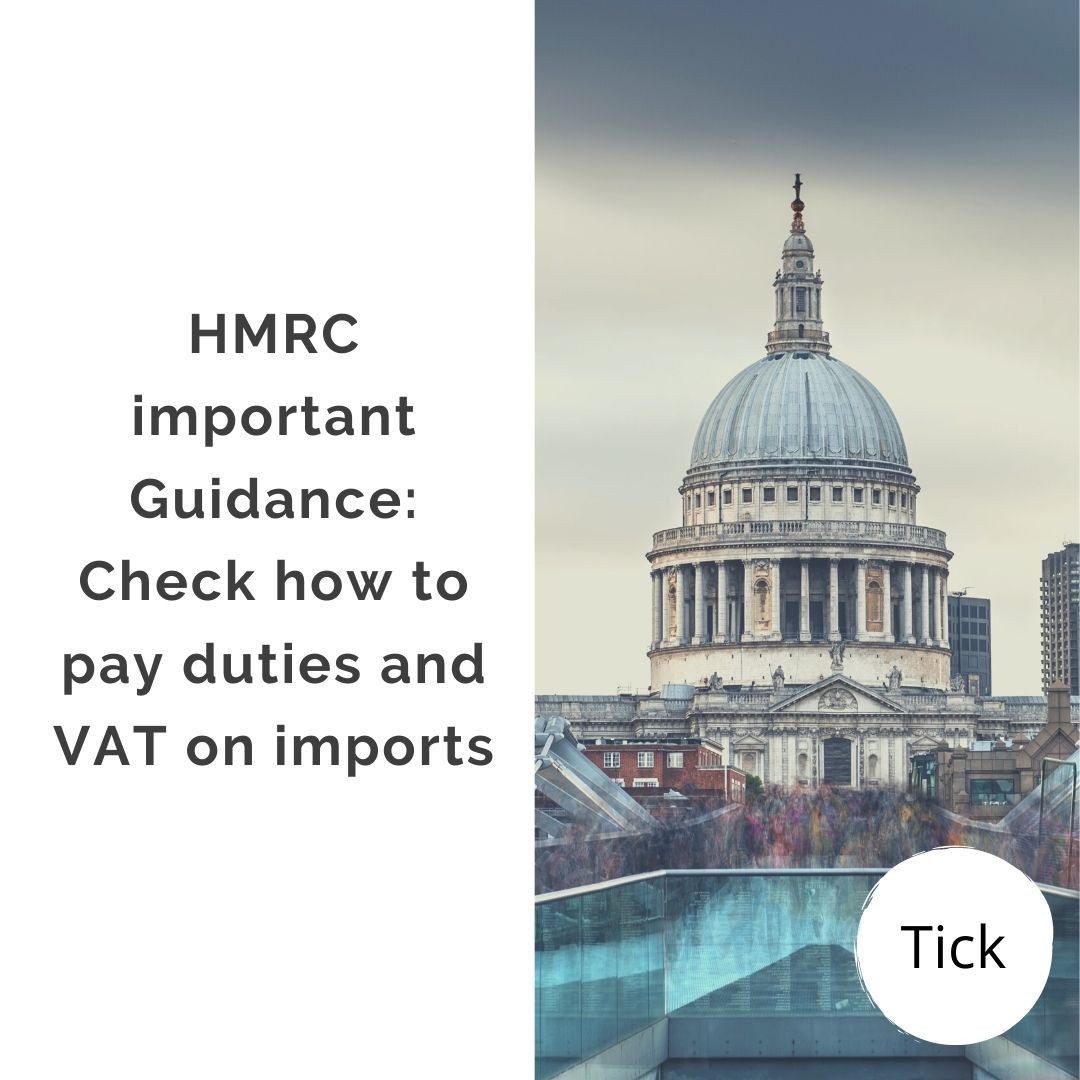If you are a company that imports goods from outside the UK, there are a number of ways you can pay Duty, Excise and VAT.
No payment when goods enter the UK.
If you have deferred account , you will be able to delay payment until an agreed future date.
It means:
you delay paying the fees by an average of 30 days
you don’t have to pay right away every time you want to check in your goods
HMRC can usually check in faster because it doesn’t have to process the payment for every transaction
You’ll be able to obtain copies of your deferral statements in online.
If you are registered for UK VAT you will receive a C79 Import VAT Certificate which you will need to claim Import VAT as input tax on your VAT return.
Pay when goods enter the UK
You can use a flexible accounting system when goods cross the border, if:
you want to pay by card, check or bank transfer
you are an agent of Direct Trader Input ( DTI )
You use your account in a similar way to a bank checking account, except that there are no fees for using the account, overdraft and interest.
If you are registered for UK VAT you will receive an Import VAT Certificate C79 which you will need to claim Import VAT as input tax on your VAT return.
From 1 January 2021
If you are a UK VAT registered company, you can see when you can include import VAT in your VAT return .
Check when you can settle the import VAT in the VAT declaration
If your business is VAT registered in the UK, find out when you can or need to account for import VAT on your VAT return (also known as deferred VAT settlement).
Accounting for import VAT on your VAT return means that you will declare and recover the import VAT on the same VAT return, instead of paying it in advance and recovering it later.
The normal rules on what VAT can apply recovered as input tax .
Who can bill Import VAT on their VAT return
From January 1, 2021, if your business is VAT registered in the UK, you will be able to account for Import VAT on your VAT return for goods imported into:
Great Britain (England, Scotland and Wales) from anywhere outside the UK
Northern Ireland outside the UK and EU
There will be no change in the treatment of VAT or the way it is accounted for for the movement of goods between Northern Ireland and the EU.
You do not need any consent to account for import VAT on your VAT return.
Non-established taxpayers
If you are not established as a taxpayer, you must hire someone to do customs clearance for you, including completing a customs declaration.
If you want to settle the import VAT on your VAT return, you must inform the person in charge of the customs office to indicate it in the customs declaration and enter your details as the recipient.
When can you account for import VAT on your VAT return
You can do this if:
the goods you import are intended for use in your company
you provide your VAT number in your customs declaration
Goods in special procedures
If you are reporting goods to Customs Procedure , you can choose to settle the import VAT on your VAT return by submitting a declaration that puts them into free circulation from the following special procedures:
customs warehousing
inward processing
temporary admission
end use
outward processing
suspension of duties
Excise goods
You can choose to settle the import VAT on the VAT return when you release excise goods for use in the UK – also known as “eligible for home use.””.
This also applies to situations where the goods are released from the excise warehouse after the period of suspension of duty collection from the moment of importation.
If you don’t know the full customs value of the goods
You can still settle the import VAT on your VAT return even though you cannot confirm the full customs value of the imported goods.
If you use CHIEF , you should:
Declare the highest value of VAT.
Select that you will settle the import VAT in the VAT declaration.
If you use a customs declaration service, you should:
Take advantage of the guarantee, to cover an unknown amount of VAT.
Select that you will settle the import VAT on the VAT return in a known amount.
When you need to include the import VAT on your VAT return.
If you are importing goods that are not inspected into the UK from the EU between January 1 and June 30, 2021, you must include the import VAT on your VAT return if:
you delay the customs declaration
use the simplified customs declaration to make a declaration in your own records
You must make sure that when completing the supplementary declaration, you select that you will settle the import VAT in your VAT declaration.
Using someone to import goods on your behalf
If you commission a person or company to import goods on your behalf (eg a Freight Forwarder, Customs Broker, Broker or Express Package Operator), you must tell them how you want to account for the import VAT on that import so they can complete a customs declaration.
If you already have someone, please contact them and let them know if you want to account for import VAT on your VAT return for goods you import from January 1, 2021. Keep a written record of what has been agreed.
Purchase of goods from a supplier who arranges for someone to import goods on your behalf
You can buy goods from a vendor who arranges for a person or company – for example, a rapid shipment operator – to import and deliver the goods to you. You need to agree with the supplier how you want to account for import VAT so that he can tell him to make the appropriate entry on the customs declaration. You should keep a written record of what has been agreed.
Unless the supplier explicitly tells them not to do so, some fast shipping operators will choose to include the import VAT on their VAT return. Your supplier will let you know when they ask for your registration number EORI or VAT. You will need to inform your supplier if you do not want to include the import VAT on your VAT return.
The import will appear on your monthly statement as normal.
How to complete a customs declaration for the purpose of settling import VAT in the VAT declaration
After completing the customs declaration, you can choose to account for the import VAT on your VAT declaration.
If you use the customs handling system for importing and exporting goods ( CHIEF )
You must enter on your declaration:
Your number EORI starting with“ GB ”, which includes your VAT registration number in box 8 (Primary Recipient) or, if applicable, your VAT registration number in box 44h (Registered Recipient)
„G” as payment method in field 47e
If you use the customs declaration service
You must provide your VAT registration number at header level in data element 3/40.
VAT will be charged based on yours EORI and it will only be at declaration level.
If you are acting on behalf of someone else
If you have been authorized to act on behalf of your client, you must provide their client number EORI or the VAT registration number in the customs declaration.
If you are importing goods in shipments with a value not exceeding £ 135
Learn about the treatment of VAT on goods sold abroad:
UK customers using the marketplace as of 1 January 2021
directly to customers in the UK from 1 January 2021


